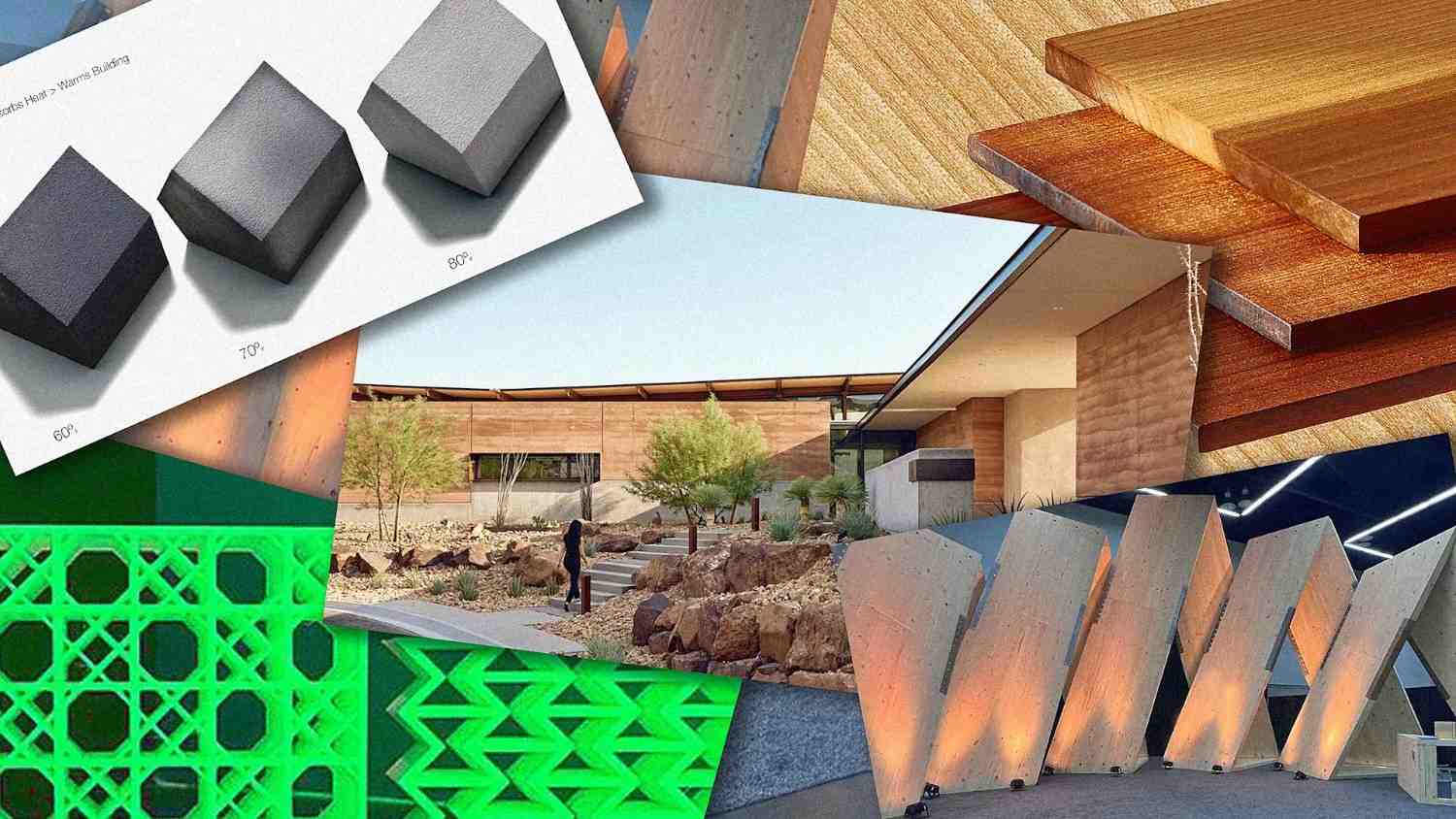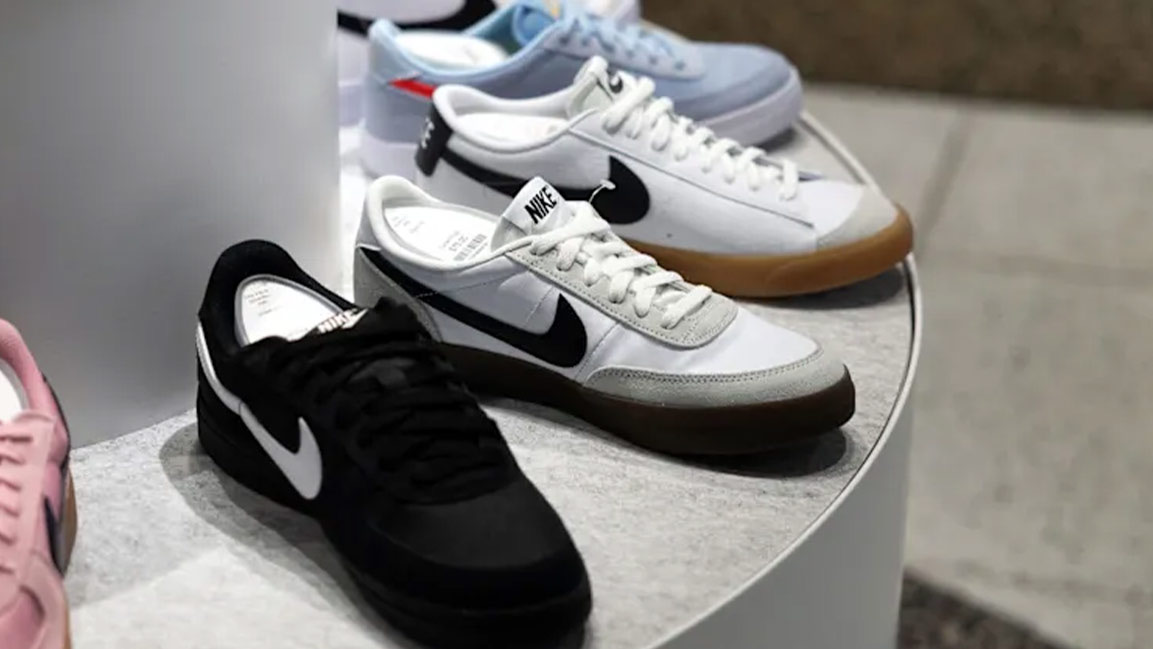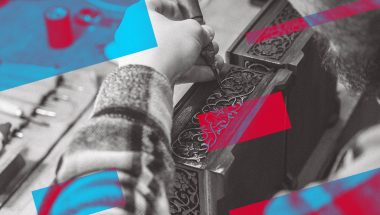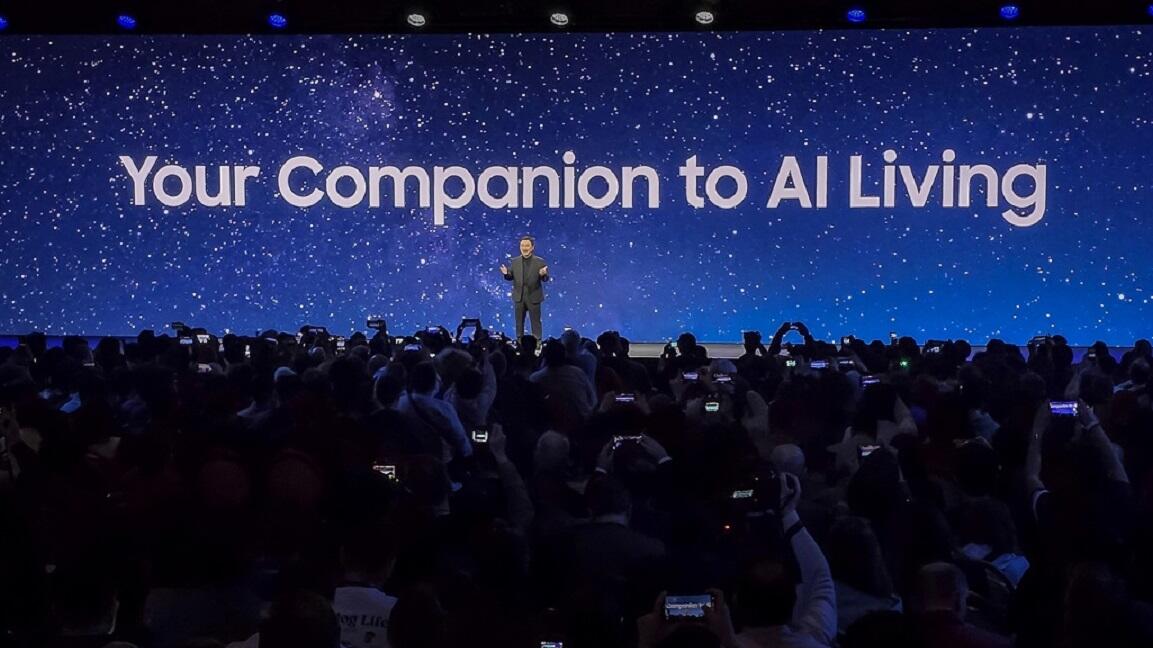- | 12:00 pm
Innovation by Design Summit 2025 captures the spirit of creativity driving global change
From daily life to global impact, experts at the Innovation by Design Summit explored the power of design.
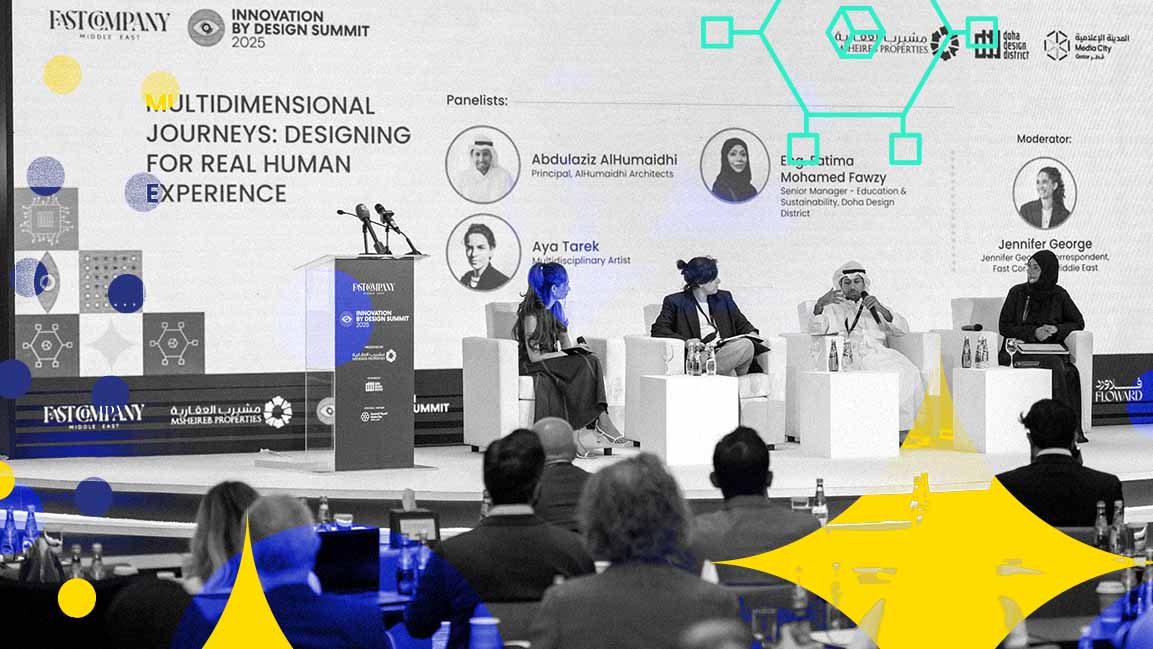
From the everyday, like the phone in your hand, the ad you pass on the street, or the chair you sit in at work, to the transformative, such as smart building technology and biophilic architecture, design surrounds us and quietly shapes how we live. It is where artistry meets utility and fresh thinking drives progress, laying the groundwork for tomorrow’s breakthroughs.
The second edition of Fast Company Middle East’s Innovation by Design Summit, held in Doha with support from Doha Design District and Media City Qatar as a strategic partner, brought that idea to life, uniting artists, designers, architects, and industry leaders to discuss the practices shaping the future of design.
Speaking at the event, Eng. Ali Al Kuwari, CEO of Msheireb Properties, said, “This summit illustrates how design thinking is essential for developing progressive societies and crafting meaningful solutions. It aligns seamlessly with our vision to position Doha as a global hub for innovative ideas.”
Eng. Jassim Mohamed Al-Khori, CEO of Media City Qatar, added: “The Innovation by Design Summit 2025 was a remarkable gathering of creative and business leaders that underscored how design, technology, and sustainability can drive real progress. As a strategic partner, Media City Qatar is committed to supporting platforms that spark innovation, contribute to economic diversification, and strengthen Qatar’s position as a hub for next-generation ideas.”
Ravi Raman, Publisher of Fast Company Middle East, observed: “What we witnessed represents a paradigm shift. The discussions prove that tomorrow’s most successful enterprises will be those guided by design principles. This is where that transformation begins.”
The summit centred on technological innovation, cultural heritage, sustainability, and human connection. Through sessions, panels, and keynotes, participants examined how design shapes experiences, influences behavior, and drives progress from local communities to global industries.
DESIGNING FOR HUMANITY
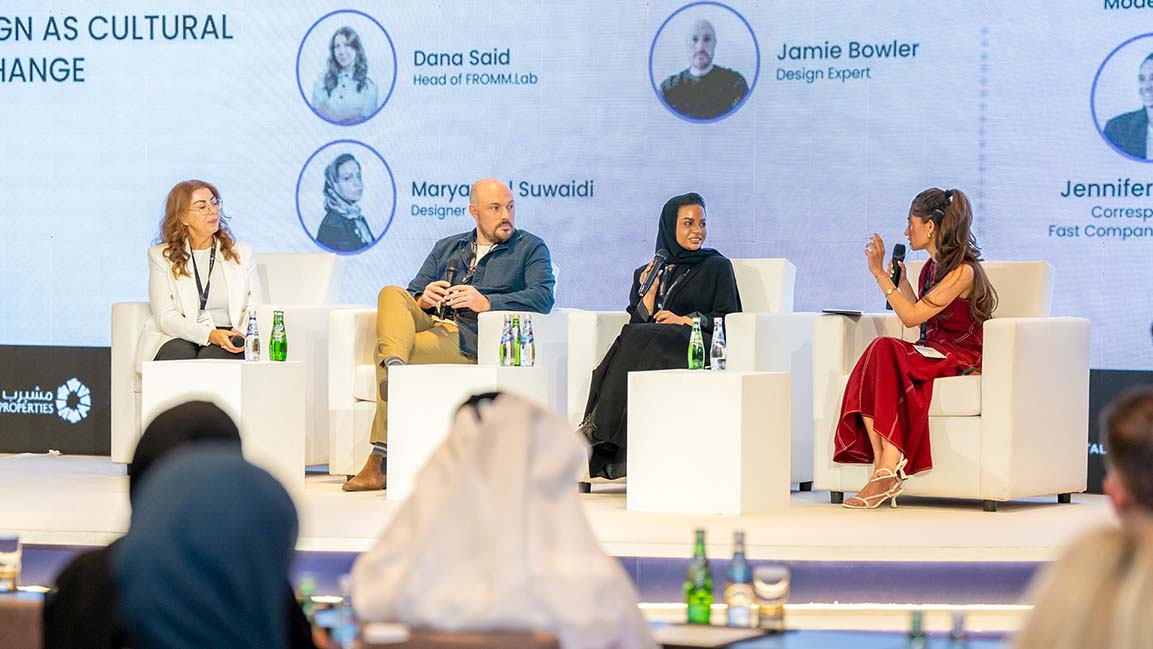
‘Connecting Worlds: Design as Cultural Exchange’ Panel at Innovation by Design Summit
Why it mattered: design begins with people. Placing human needs at the center ensures that creative work responds to lived realities and fosters inclusive communities.
Samar Maakaroun, Partner at Pentagram, opened the summit by exploring language as a design tool. She argued that words are never neutral; they carry culture, history, and power. The language chosen in design can determine who feels included, who is excluded, and how whole communities are perceived and represented. Her remarks set the tone for the day, reminding attendees that small decisions can have wide social consequences.
Building on that idea, Melanie Fessel, Principal of TerreformX Europe and Professor at RheinMain University of Applied Sciences, stressed the urgent role design must play in tackling large-scale challenges. She showed how technological tools and sustainable practices can be combined to rethink systems and spaces while keeping everyday human needs at the centre. Together, these perspectives highlighted that design is both cultural and pragmatic.
The opening panel, Multidimensional Journeys: Designing for Real Human Experience, focused on empathy mapping, the trade-off between personalization and scale, and how design can cultivate deeper emotional connections.
Multidisciplinary artist Aya Tarek emphasised the need to keep humans at the centre of the conversation, noting their changing ambitions and contexts. “We’re living in a world with constant exchange because of the internet, immigration, and movement from one place to another. People have different needs, different visions, and we must hold space for all of them.”
Tarek also reflected on the fine line between appreciation and appropriation when representing diverse cultures. “It’s a very sensitive topic, to impose your perception on others and say, ‘This is how I see you, and this is what you are.’ It’s a complicated process, so we need to take the time to listen, let go of preconceived ideas, and relearn things from a new perspective.”
Abdulaziz AlHumaidhi, Principal at AlHumaidhi Architects, added a practical view on scaling empathy across organisations. “In practical terms, it’s the discipline of trying to do less and achieve more—curating the right opportunities so that every project becomes a prototype, rather than just an exercise in how many projects I can do or a volumetric exercise. That’s how we try to preserve both empathy and quality at scale.”
The panel Connecting Worlds: Design as Cultural Exchange, featuring Dana Said, Head of FROMM.Lab, Jamie Bowler, and Maryam Al Suwaidi, explored how ideas can travel across borders without losing their meaning. The discussion highlighted how labs, practitioners, and designers collaborate to translate concepts across cultural and professional boundaries, and how collective exchange amplifies design’s reach and impact.
TECHNOLOGY IN DESIGN
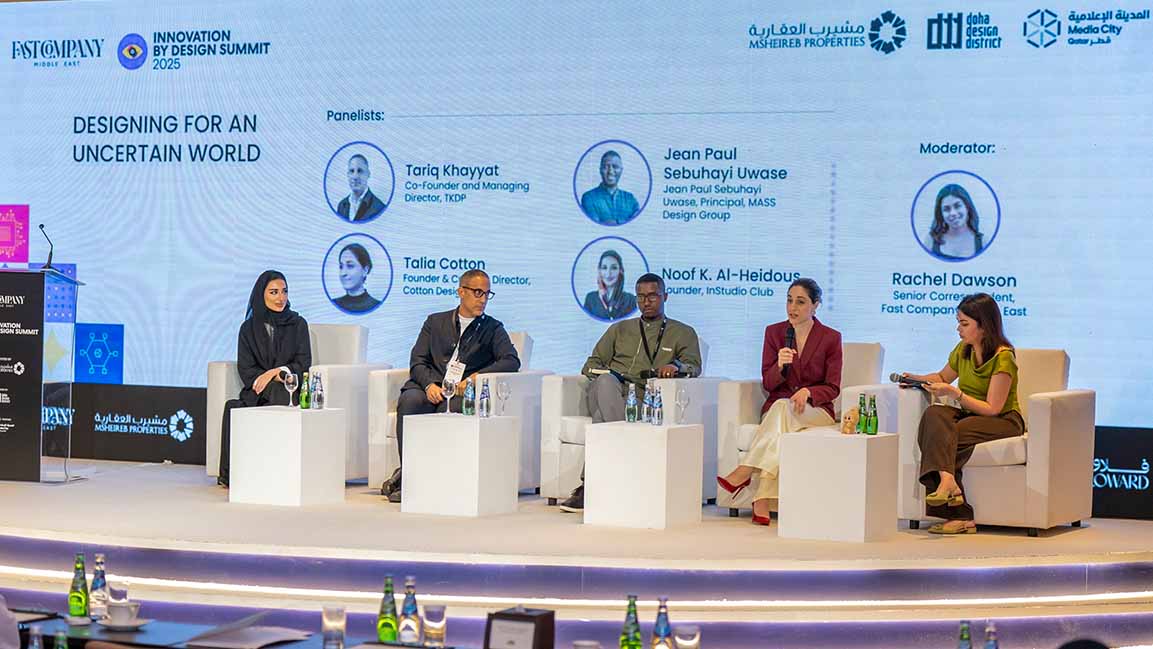
‘Designing for an Uncertain World’ panel at the Innovation by Design Summit
As design increasingly intersects with technology, creators are exploring how innovation can transform experiences, reshape industries, and connect with people in meaningful ways. The summit highlighted how AI, immersive media, and human-centered solutions are redefining the boundaries of design.
Joshua Johnson, Co-Founder of Liquid Hectare, argued that AI is reshaping design and exposing weaknesses in traditional models. He said data centers can no longer be treated as static real estate; they must become high-performance, integrated systems that deliver compute, storage, and security to support modern design workflows.
The conversation then turned to immersive media in a fireside chat titled Beyond the Screen: The Rise of Immersive Media in the Digital Age. Contemporary and NFT artist Kristel Bechara described how immersive work merges art, technology, and interactivity to push the boundaries of creativity, ownership, and monetization. She highlighted the medium’s ability to engage wider audiences. “Not everybody likes to go into a gallery and look at art; sometimes galleries can be a bit intimidating. But with immersive media, it’s an open invitation. You come in, you just step in, experience it, and feel it.”
She also acknowledged the challenges of blending technology with artistic practice.
“As technology develops so fast, you need to stay up to date. It’s a little hectic, but I think what’s very important is to find a balance. Technology will always change. I think using technology just for the sake of novelty takes away from the art itself.”
For Bechara, the core requirement is that the work remain human and universal. “From a design point of view, it also has to feel intuitive. You don’t want to be giving instructions to people stepping into an immersive experience. You want them to feel comfortable,” she added.
The summit tied these ideas to real-world service design in a session on travel. Essam Akhonbay, Vice President of Marketing at Saudia Airlines, explained that innovation fails when it is disconnected from brand, culture, or people’s real needs. He described how Saudia, in collaboration with Landor, reimagined the travel experience with the Coolest Ihram, a brand-driven idea that blends tradition and technology. Essam stressed the need to move with speed, cultural sensitivity, and ownership to create offerings that resonate with travelers.
SUSTAINABILITY AND THOUGHTFUL DESIGN
Sustainability remained a central theme throughout the summit, sparking conversations about how design can create meaningful, lasting impact.
Designer Abdulrahman Almuftah addressed the topic during a fireside chat, explaining that sustainability in design goes beyond materials and energy. He emphasized the importance of being intentional about what is designed, focusing on filling gaps in the market rather than producing something that already exists in abundance.
In his keynote address, Waleed Arafa, Founder & Principal of Dar Arafa Architecture, explored how design must move beyond surface-level trends to embrace deeper purpose and responsibility. He highlighted the need to create spaces that are not only visually compelling but also environmentally responsive, balancing both form and function.
Arafa further emphasized how innovative architectural practices can integrate aesthetics, sustainability, and cultural context to craft smarter, more resilient environments—spaces that genuinely serve the communities they inhabit.
BRANDING AND FORGING CONNECTIONS
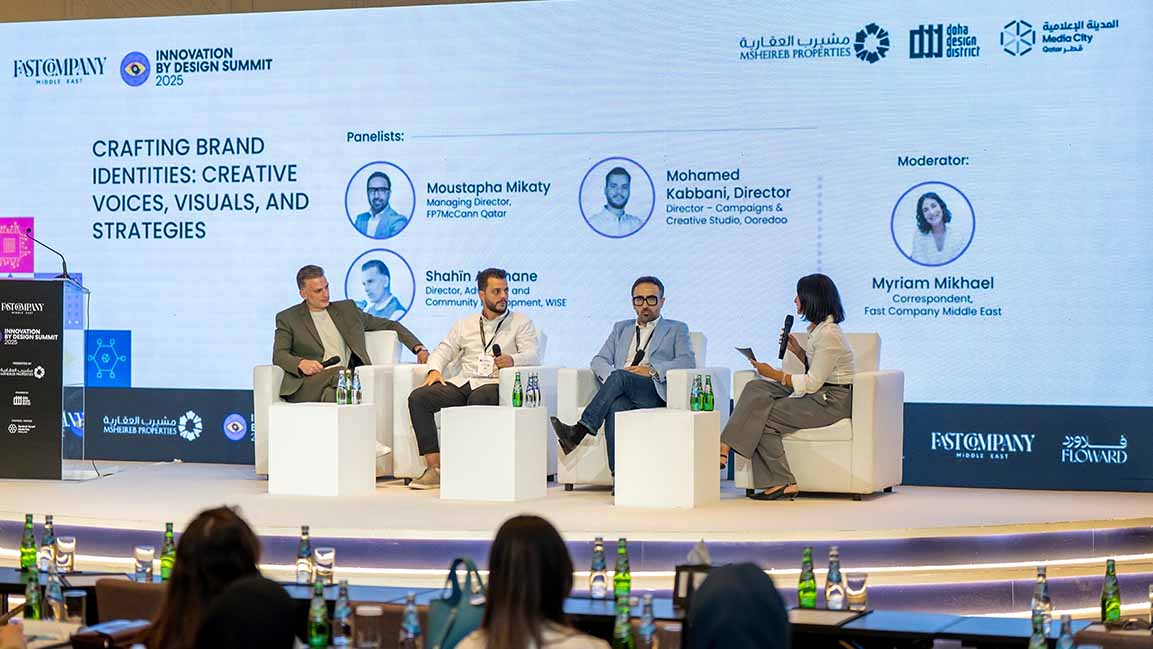
‘Crafting Brands: Creative Voices, Visuals, and Strategies’ panel at the Innovation by Design Summit
Tarek Miknas, CEO of FP7McCann Middle East, North Africa and Turkey, highlighted the role of design in branding and communications, emphasizing how emerging ideas and cultural shifts shape the way brands create work that resonates and drives change within communities.
In a panel on brand building, Moustapha Mikaty, Managing Director of FP7McCann Qatar; Mohamed Kabbani, Director of Campaigns and Creative Studio at Ooredoo; and Shahïn Ammane, Director of Advocacy and Community Development at WISE, shared insights into how authentic and memorable brands are crafted through storytelling, strategy, and cultural awareness.
Mikaty urged the audience to balance responsiveness to trends with timelessness. Ammane argued that brands should combine bold creativity with consistency and reliability. Kabbani added that knowing when to challenge conventions and push boundaries is crucial to making a lasting impression.
Alongside the panels, attendees took part in a workshop that put ideas into practice. No Brief. No Rules. Just the Future of Creator Collaboration, hosted by Ibrahim Hasan, Regional Head of McCann Content Studios, and digital strategist Kenza Djoudi, invited creators and marketers to rethink collaboration. By focusing on shared vision, mutual responsibility, and co-creation, the session showed how flattening hierarchies can spark fresh ideas, strengthen teamwork, and amplify impact.
DESIGN BREAKTHROUGHS
The summit concluded with the Msheireb Innovation in Design Awards, celebrating design-driven solutions and honoring individuals shaping the future of contemporary design. The awards were presented by Eng. Al Kuwari and Eng. Al-Khori, highlighting Qatar’s emergence as a regional design hub where global expertise meets local creativity.
In the Corporate Excellence categories, R/GA was recognized for Technology-Driven Design with its AI-powered platforms and immersive AR and VR experiences. Landor won in Retail and Experiential Design for the Imperia branding project, while Masdar City received the Sustainable Design Award for its renewable energy initiatives and zero-carbon neighborhoods.
Joe Doucet was honored in Travel and Hospitality for pioneering hotel concepts, and aCross designs was recognized in Architecture and Urban Planning for revitalizing historic buildings.
The Emerging Designer categories highlighted regional talent across three fields. Yasamin Shaikhi of VCUarts Qatar won Product Design and Innovation for Food Waste Renaissance: From the Table, For the Table, a project transforming food by-products into functional lighting inspired by circular design principles.
Sheikh Khalifa bin Abdullah Al-Thani received recognition in Art and Design Expression for his multimedia exhibition Intaj and creative platform Intajat, which bridge heritage, art, and cultural storytelling while nurturing local creative ecosystems.
Bachir Mohammed was honored for Design for Social Impact with Echo of Lost Innocence, a large-scale installation of 15,000 concrete-bound teddy bears symbolizing children lost in Gaza, using art as a call for humanitarian awareness and relief.
The awards ceremony capped off the summit by celebrating the ingenuity, purpose, and transformative potential of forward-thinking design, showcasing how creativity can inspire meaningful change across communities and industries.
Innovation by Design will return in 2026.















